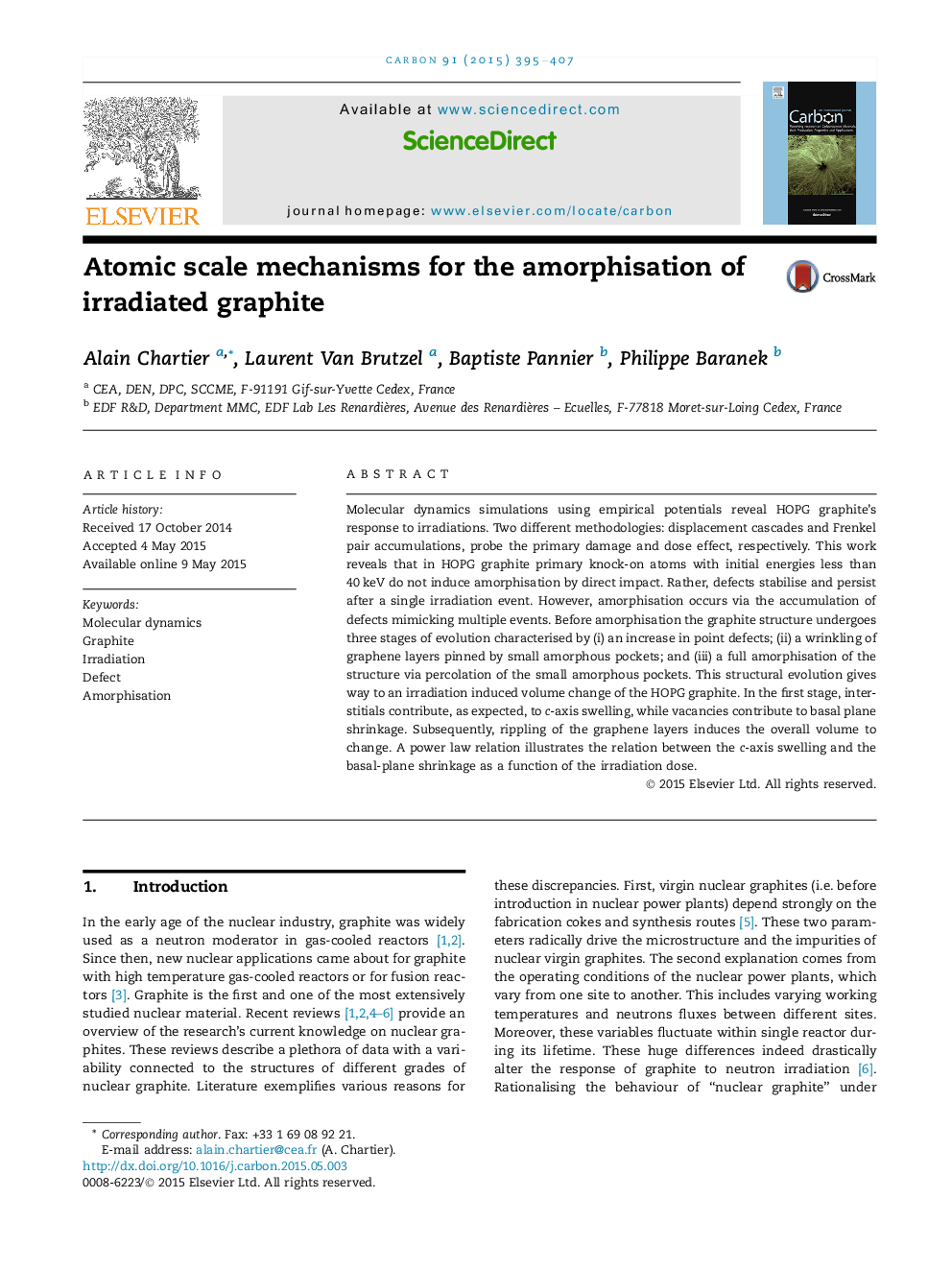| Article ID | Journal | Published Year | Pages | File Type |
|---|---|---|---|---|
| 7851759 | Carbon | 2015 | 13 Pages |
Abstract
Molecular dynamics simulations using empirical potentials reveal HOPG graphite's response to irradiations. Two different methodologies: displacement cascades and Frenkel pair accumulations, probe the primary damage and dose effect, respectively. This work reveals that in HOPG graphite primary knock-on atoms with initial energies less than 40Â keV do not induce amorphisation by direct impact. Rather, defects stabilise and persist after a single irradiation event. However, amorphisation occurs via the accumulation of defects mimicking multiple events. Before amorphisation the graphite structure undergoes three stages of evolution characterised by (i) an increase in point defects; (ii) a wrinkling of graphene layers pinned by small amorphous pockets; and (iii) a full amorphisation of the structure via percolation of the small amorphous pockets. This structural evolution gives way to an irradiation induced volume change of the HOPG graphite. In the first stage, interstitials contribute, as expected, to c-axis swelling, while vacancies contribute to basal plane shrinkage. Subsequently, rippling of the graphene layers induces the overall volume to change. A power law relation illustrates the relation between the c-axis swelling and the basal-plane shrinkage as a function of the irradiation dose.
Related Topics
Physical Sciences and Engineering
Energy
Energy (General)
Authors
Alain Chartier, Laurent Van Brutzel, Baptiste Pannier, Philippe Baranek,
